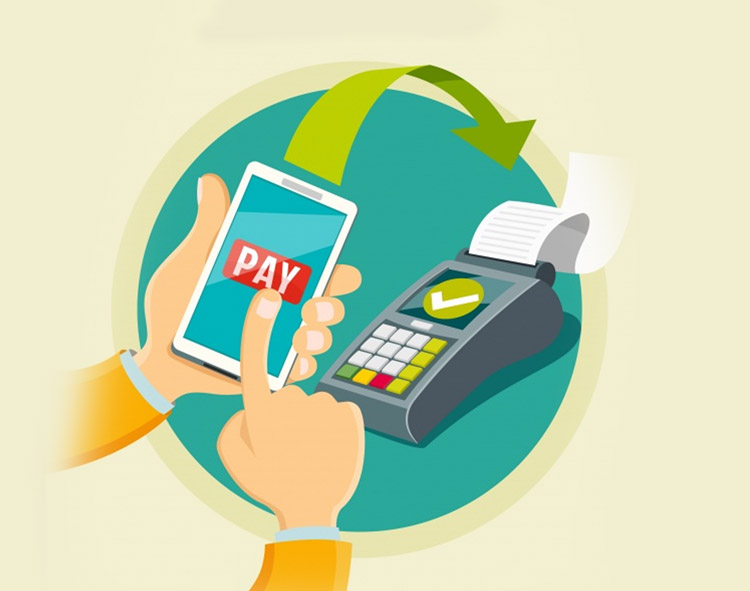Contactless payments, often referred to as tap-and-go by some banks have been around for a while. Payment systems like credit cards, debit cards, smart payments cards have been in the market for a long time and do fall under this (still evolving) category. However, the number of businesses and individual users of these older contactless payment technologies are far lower than the growing numbers seen today.
Read More: Global Stock Trading Apps that Are Changing the Face of Wealth and Asset Management
Over the recent years, there have been more sophisticated developments to how contactless payments can be done, with users now being able to use their personal smartphones and other portable and mobile devices to make secure payments.
By and large, the fundamental behind this growing technology is that it uses radio-frequency identification or near field communication to help secure and make transactions.
In retail outlets, tapping your card at a point of sale terminal that is enabled with contactless technology allows users to extract value from this evolving tech.
A Few Factors That Will Now Boost The Contactless Payments Market
The coronavirus pandemic and resulting Covid-19 spread has ensured that cash as a concept is now passé while touch-free payments take center stage.
A recent survey by Mastercard indicated how 51% of the respondents said they are using cash less often or not at all since the start of the pandemic.
To add to this, PayPal recently launched a new feature in its mobile payment app that allows users to make payments just by using QR codes.
While enabling payments with QR codes is not new to fintech or the contactless payments market (payment apps like PayTm have been known to use the QR code feature since a while now, even bigger global brands like Visa and Mastercard do), new additions such as these to existing payment platforms signifies the growing need and rising demand of contactless payment solutions.
The recent effects of the Covid-19 disease are a big influencing factor in the rise and growing need of better, safe and secure contactless payments. But that is not the only reason that can be attributed to new investments and innovations in this niche.
Read More: A Few Influential Finance Leaders Who’ve Helped Revolutionize Fintech
Convenience
If there’s anything the latest developments in tech and the introduction of the more commonly known payment apps like Apple Pay, Google Pay, even Samsung Pay have showed us, it’s that convenience to the end user is the end goal for any innovator in the market.
Apps like these allow users to conveniently pay for their purchases at the click of a button via their personal smartphone, often without the need to fill out complicated know-your-customer details. The registration, set-up and final transaction time are all set to run in seconds, making it easy for students on the go, travelers and even other everyday individual users to, including small business owners to facilitate payments of various kinds.
Not to mention, the ease it creates when all you really need to make a payment is your phone or an app, the reduced need to ferry around banknotes, change or even credit and debit cards adds to this. Besides the fact that contactless payments, or digital payments of any kind allow users to maintain a better record of their payments as opposed to when they use cash.
Read more: Consider Effortless Customer Experiences to Boost the Bottom Line
Quicker, Faster!
Several payment solution providers do claim that contactless payments can be done twice as faster as the traditional cash payment method or card based purchase method. Since there is no PIN or need to sign when making a contactless payment, it reduces the time taken to transact. This can come in handy, especially at a time when social distancing is now the new normal and where other issues can lead to unwarranted delays in everyday life, be it while grocery shopping, buying medication, or standing while waiting to fill gas. Contactless payments are a convenient option for smaller value transactions such as these and can ease the payment disruptions in normal everyday life. Contactless payments by and large are ideal for places like stadiums, fast food restaurants, gas stations and similar such situations. During the lockdowns initiated due to the Covid-19 pandemic, apps like PayTm recorded four times the growth of payments made to merchants.
The future of contactless payments
Uber allows you to pay for a ride with its own app and digital wallet. Back in 1995, South Korea’s transit authority launched its own contactless payments system, this was called UPass and allowed riders a convenient (and quick) way to pay for their bus fee.
While there has slow adoption of this contactless payment concept over the years, the new normal and new life demands will give way to a more contactless future, including a more sophisticated contactless payments market.
As payment apps like Apple Pay, Android Pay and others evolve, digital banking apps will also enrich their capabilities further to allow users to make a slew of payments instantly and effectively using more contactless technology to replace cash and card methods.
The only hindrance to a more large scale adoption is that everyday merchants and smaller retailers need to be equipped with the right technologies and infrastructure to allow shoppers to make more contactless payments.
